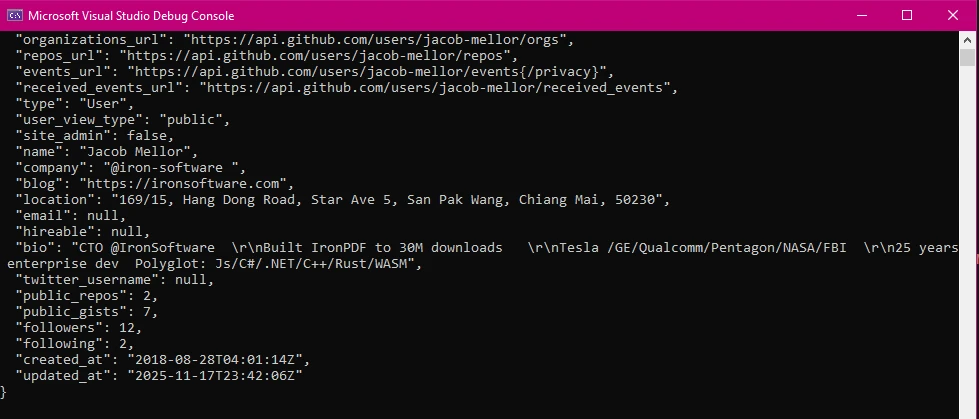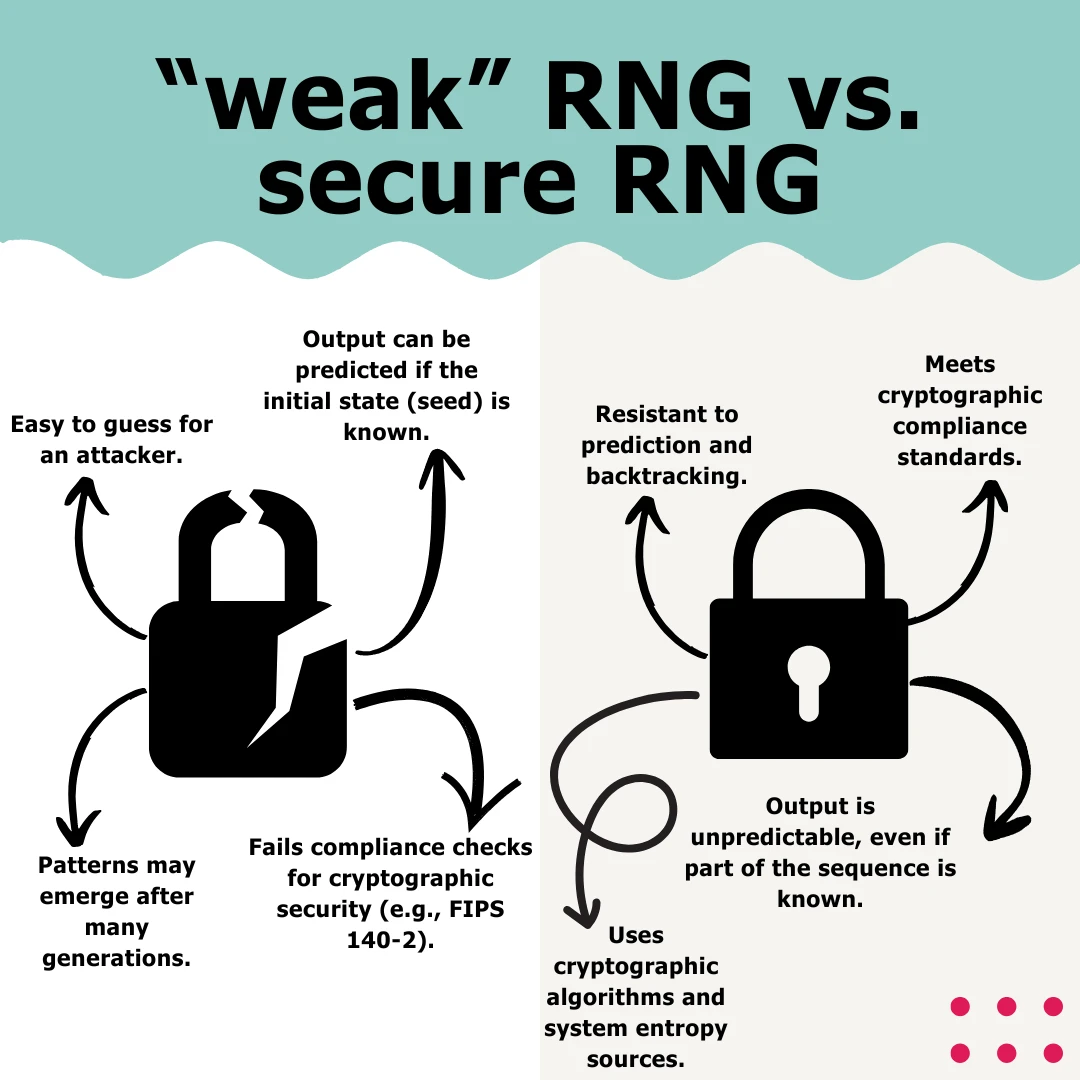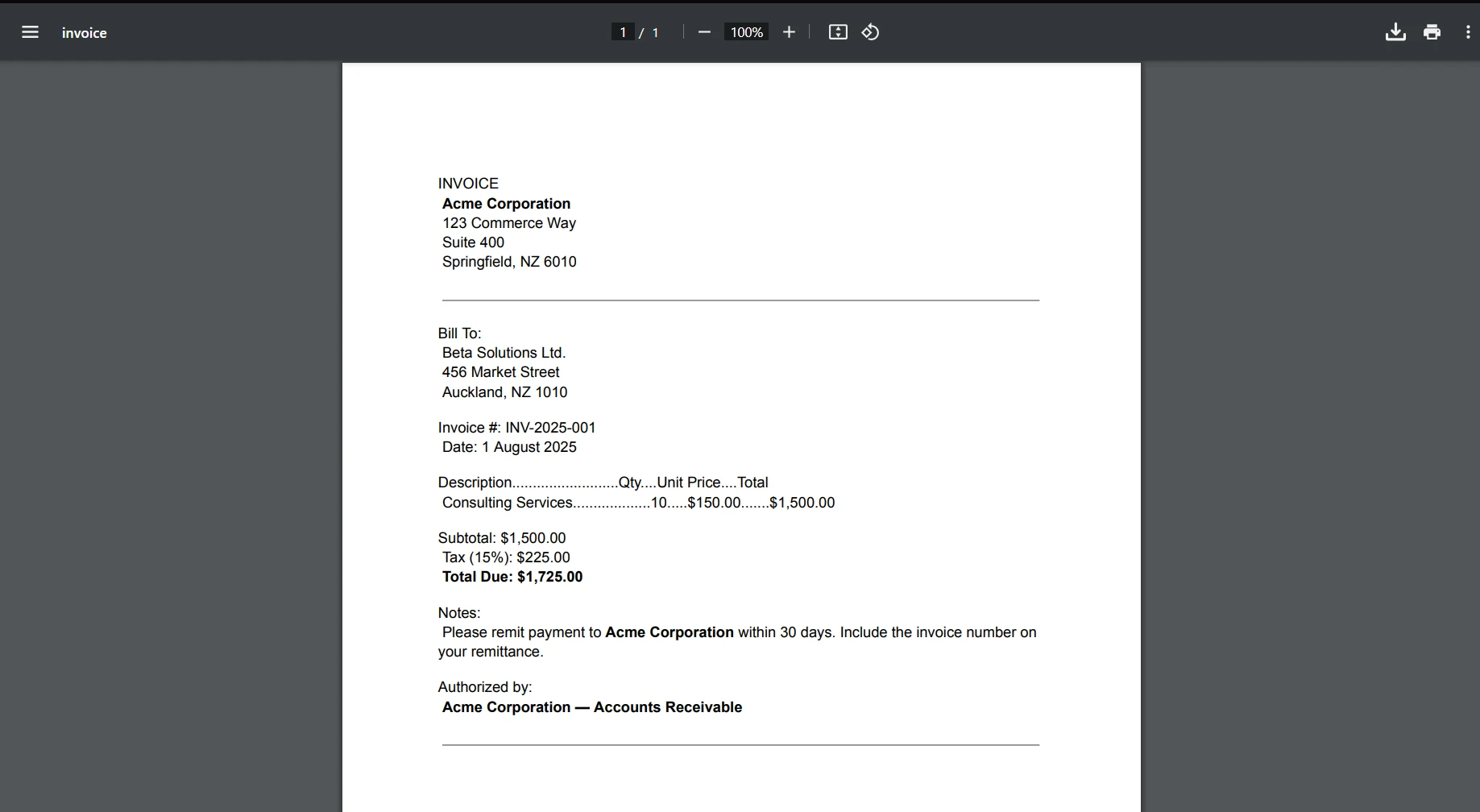Signalr C# (How it Works For Developers)
The modern web thrives on interactivity and real-time feedback. When building responsive applications, real-time web functionality is a must. This is where SignalR shines. ASP.NET Core SignalR is a library that makes adding real-time web functionality to your applications simpler than you might think.
In this tutorial, we'll embark on a journey through the basics and nuances of SignalR. Let’s dive in!
Introduction to SignalR in ASP.NET Core
ASP.NET Core SignalR provides an API for creating real-time web functionality using WebSockets and other technologies, like server-sent events. It's not just limited to ASP.NET Core. You can use SignalR with various clients, like a browser or a mobile app, ensuring connected clients are updated instantly.
Setting Up Your Development Environment
To get started, you’ll need:
- ASP.NET Core SDK
- Visual Studio
Building the SignalR Hub
At its core, SignalR revolves around a SignalR hub, a central point for both the client and the server to interact.
Create a new ASP.NET Core project. Now, add a new class and name it ChatHub. This will act as our SignalR hub.
using Microsoft.AspNetCore.SignalR;
using System.Threading.Tasks;
// Define a SignalR Hub class named ChatHub
public class ChatHub : Hub
{
// Asynchronous method to send messages
public async Task SendMessage(string user, string message)
{
// Send a message to all connected clients
await Clients.All.SendAsync("ReceiveMessage", user, message);
}
}using Microsoft.AspNetCore.SignalR;
using System.Threading.Tasks;
// Define a SignalR Hub class named ChatHub
public class ChatHub : Hub
{
// Asynchronous method to send messages
public async Task SendMessage(string user, string message)
{
// Send a message to all connected clients
await Clients.All.SendAsync("ReceiveMessage", user, message);
}
}Imports Microsoft.AspNetCore.SignalR
Imports System.Threading.Tasks
' Define a SignalR Hub class named ChatHub
Public Class ChatHub
Inherits Hub
' Asynchronous method to send messages
Public Async Function SendMessage(ByVal user As String, ByVal message As String) As Task
' Send a message to all connected clients
Await Clients.All.SendAsync("ReceiveMessage", user, message)
End Function
End ClassIn the Startup class, let's integrate our hub.
public class Startup
{
// Configure services and add SignalR
public void ConfigureServices(IServiceCollection services)
{
services.AddSignalR(); // Add SignalR services
}
// Configure the app to use SignalR and map the hub
public void Configure(IApplicationBuilder app, IWebHostEnvironment env)
{
// Setup endpoint to route to ChatHub
app.UseEndpoints(endpoints =>
{
endpoints.MapHub<ChatHub>("/chatHub");
});
}
}public class Startup
{
// Configure services and add SignalR
public void ConfigureServices(IServiceCollection services)
{
services.AddSignalR(); // Add SignalR services
}
// Configure the app to use SignalR and map the hub
public void Configure(IApplicationBuilder app, IWebHostEnvironment env)
{
// Setup endpoint to route to ChatHub
app.UseEndpoints(endpoints =>
{
endpoints.MapHub<ChatHub>("/chatHub");
});
}
}Public Class Startup
' Configure services and add SignalR
Public Sub ConfigureServices(ByVal services As IServiceCollection)
services.AddSignalR() ' Add SignalR services
End Sub
' Configure the app to use SignalR and map the hub
Public Sub Configure(ByVal app As IApplicationBuilder, ByVal env As IWebHostEnvironment)
' Setup endpoint to route to ChatHub
app.UseEndpoints(Sub(endpoints)
endpoints.MapHub(Of ChatHub)("/chatHub")
End Sub)
End Sub
End ClassClient Side Implementation
SignalR is versatile. While this tutorial focuses on the ASP.NET Core and the JavaScript client library, SignalR supports various clients, from .NET to Java.
Using the SignalR Client Library
The SignalR client library lets your client-side code connect and communicate directly with the server side. For our example, let's use JavaScript.
First, add the SignalR JavaScript client library:
<script src="https://cdn.jsdelivr.net/npm/@microsoft/signalr@3.1.8/dist/browser/signalr.js"></script><script src="https://cdn.jsdelivr.net/npm/@microsoft/signalr@3.1.8/dist/browser/signalr.js"></script>Now, you can connect to the hub:
// Create a connection to the SignalR hub
const connection = new signalR.HubConnectionBuilder()
.withUrl("/chatHub") // The hub URL
.build();
// Start the connection
connection.start().catch(err => console.error(err.toString()));
// Setup a listener for receiving messages
connection.on("ReceiveMessage", (user, message) => {
console.log(`${user} says: ${message}`);
});// Create a connection to the SignalR hub
const connection = new signalR.HubConnectionBuilder()
.withUrl("/chatHub") // The hub URL
.build();
// Start the connection
connection.start().catch(err => console.error(err.toString()));
// Setup a listener for receiving messages
connection.on("ReceiveMessage", (user, message) => {
console.log(`${user} says: ${message}`);
});This simple client-side code connects to the hub and listens for any messages broadcast.
Real-Time Functionality in Action
Sending Messages
Using our earlier client-side and server-side code snippets, sending messages is straightforward. Both the server and the client can initiate communication.
From server-side:
// Send a message from the server to all connected clients
await Clients.All.SendAsync("ReceiveMessage", "Server", "Hello from server!");// Send a message from the server to all connected clients
await Clients.All.SendAsync("ReceiveMessage", "Server", "Hello from server!");' Send a message from the server to all connected clients
Await Clients.All.SendAsync("ReceiveMessage", "Server", "Hello from server!")And from client:
// Send a message from the client to the server
connection.send("SendMessage", "Client", "Hello from client!")
.catch(err => console.error(err.toString()));// Send a message from the client to the server
connection.send("SendMessage", "Client", "Hello from client!")
.catch(err => console.error(err.toString()));Advanced Real-Time Communication
ASP.NET Core SignalR offers advanced real-time communication features:
- Grouping Connections: Segment connected clients into groups, broadcasting messages to specific segments.
- Handling Disconnections: Automatically manage client connections and disconnections.
- Binary Protocol: While SignalR uses a text-based protocol by default, it supports a binary protocol as well.
SignalR with Azure SignalR Service
For scalable real-time functionality, integrate Azure SignalR Service. This fully managed service supports massive numbers of simultaneous connections, making it ideal for high-demand apps.
Integrating Azure SignalR Service:
- Install the Azure SignalR SDK.
- Use Azure Service Bus for backplane support.
- Adjust the
Startupclass to use Azure SignalR.
public class Startup
{
public void ConfigureServices(IServiceCollection services)
{
// Add Azure SignalR services
services.AddSignalR().AddAzureSignalR();
}
public void Configure(IApplicationBuilder app, IWebHostEnvironment env)
{
// Use Azure SignalR and map hub with routes
app.UseAzureSignalR(routes =>
{
routes.MapHub<ChatHub>("/chatHub");
});
}
}public class Startup
{
public void ConfigureServices(IServiceCollection services)
{
// Add Azure SignalR services
services.AddSignalR().AddAzureSignalR();
}
public void Configure(IApplicationBuilder app, IWebHostEnvironment env)
{
// Use Azure SignalR and map hub with routes
app.UseAzureSignalR(routes =>
{
routes.MapHub<ChatHub>("/chatHub");
});
}
}Public Class Startup
Public Sub ConfigureServices(ByVal services As IServiceCollection)
' Add Azure SignalR services
services.AddSignalR().AddAzureSignalR()
End Sub
Public Sub Configure(ByVal app As IApplicationBuilder, ByVal env As IWebHostEnvironment)
' Use Azure SignalR and map hub with routes
app.UseAzureSignalR(Sub(routes)
routes.MapHub(Of ChatHub)("/chatHub")
End Sub)
End Sub
End ClassIron Suite Enhancing SignalR with Premium .NET Tools
While ASP.NET Core SignalR provides an outstanding foundation for real-time web functionality, developers often look for tools to enhance the overall experience and functionality. That's where Iron Software Suite of Libraries enters the picture.
Iron Suite is a suite of premium .NET libraries, designed to supercharge your ASP.NET Core applications, including those utilizing SignalR. Each product in this suite offers unique capabilities, ensuring a richer application experience. Let's delve into the offerings:
IronPDF
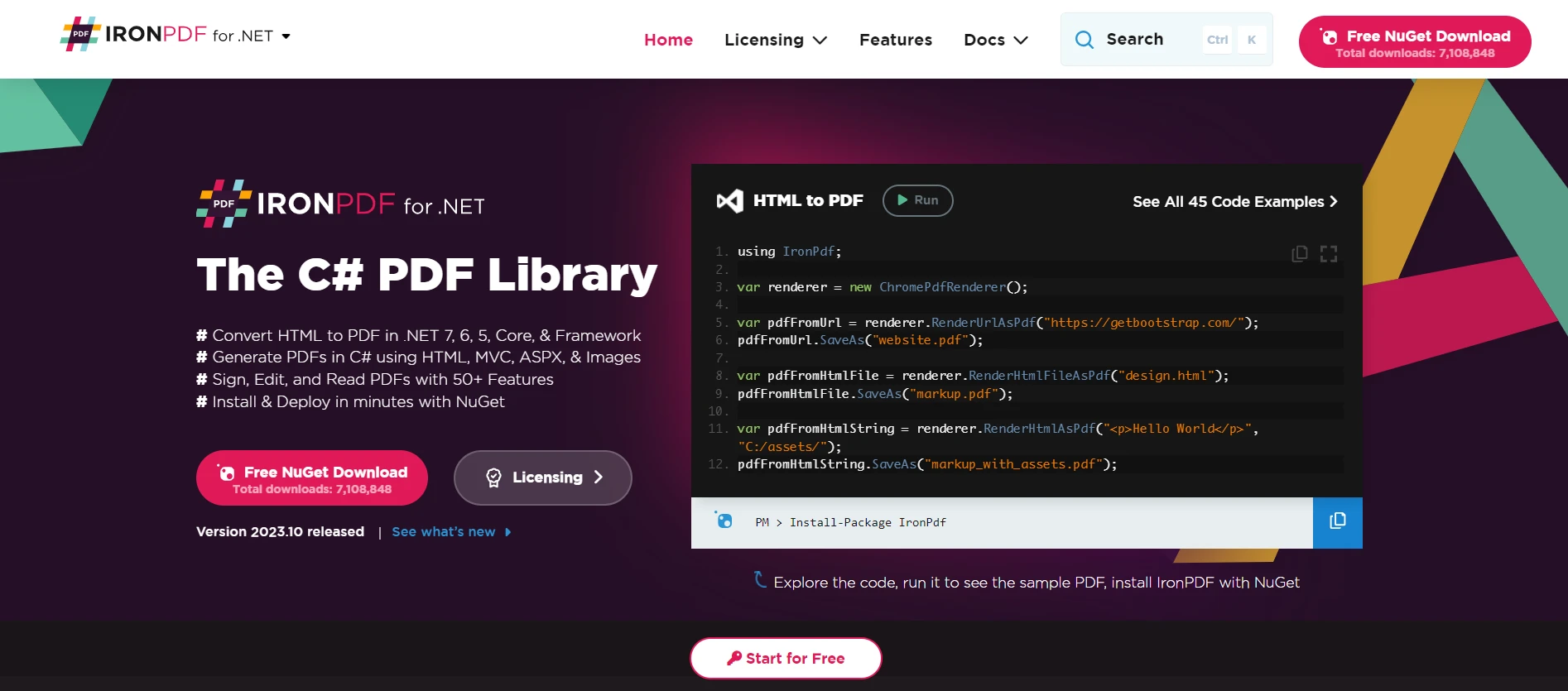
Learn more about IronPDF capabilities lets you generate, edit, and read PDF files within your .NET applications. Imagine integrating SignalR in a scenario where a team collaborates on a document in real-time. As changes are made, the document can be converted to a PDF on the fly, with updates pushed to all connected clients seamlessly. The real-time functionality of SignalR paired with IronPDF's capabilities could revolutionize collaborative tools.
IronPDF converts HTML, URLs, and full webpages into stunning PDFs like the original. It’s perfect for saving online reports, invoices, or any web-based information you want to keep. Are you looking to turn HTML to PDF? Try IronPDF today!
using IronPdf;
class Program
{
static void Main(string[] args)
{
var renderer = new ChromePdfRenderer();
// 1. Convert HTML String to PDF
var htmlContent = "<h1>Hello, IronPDF!</h1><p>This is a PDF from an HTML string.</p>";
var pdfFromHtmlString = renderer.RenderHtmlAsPdf(htmlContent);
pdfFromHtmlString.SaveAs("HTMLStringToPDF.pdf");
// 2. Convert HTML File to PDF
var htmlFilePath = "path_to_your_html_file.html"; // Specify the path to your HTML file
var pdfFromHtmlFile = renderer.RenderHtmlFileAsPdf(htmlFilePath);
pdfFromHtmlFile.SaveAs("HTMLFileToPDF.pdf");
// 3. Convert URL to PDF
var url = "http://ironpdf.com"; // Specify the URL
var pdfFromUrl = renderer.RenderUrlAsPdf(url);
pdfFromUrl.SaveAs("URLToPDF.pdf");
}
}using IronPdf;
class Program
{
static void Main(string[] args)
{
var renderer = new ChromePdfRenderer();
// 1. Convert HTML String to PDF
var htmlContent = "<h1>Hello, IronPDF!</h1><p>This is a PDF from an HTML string.</p>";
var pdfFromHtmlString = renderer.RenderHtmlAsPdf(htmlContent);
pdfFromHtmlString.SaveAs("HTMLStringToPDF.pdf");
// 2. Convert HTML File to PDF
var htmlFilePath = "path_to_your_html_file.html"; // Specify the path to your HTML file
var pdfFromHtmlFile = renderer.RenderHtmlFileAsPdf(htmlFilePath);
pdfFromHtmlFile.SaveAs("HTMLFileToPDF.pdf");
// 3. Convert URL to PDF
var url = "http://ironpdf.com"; // Specify the URL
var pdfFromUrl = renderer.RenderUrlAsPdf(url);
pdfFromUrl.SaveAs("URLToPDF.pdf");
}
}Imports IronPdf
Friend Class Program
Shared Sub Main(ByVal args() As String)
Dim renderer = New ChromePdfRenderer()
' 1. Convert HTML String to PDF
Dim htmlContent = "<h1>Hello, IronPDF!</h1><p>This is a PDF from an HTML string.</p>"
Dim pdfFromHtmlString = renderer.RenderHtmlAsPdf(htmlContent)
pdfFromHtmlString.SaveAs("HTMLStringToPDF.pdf")
' 2. Convert HTML File to PDF
Dim htmlFilePath = "path_to_your_html_file.html" ' Specify the path to your HTML file
Dim pdfFromHtmlFile = renderer.RenderHtmlFileAsPdf(htmlFilePath)
pdfFromHtmlFile.SaveAs("HTMLFileToPDF.pdf")
' 3. Convert URL to PDF
Dim url = "http://ironpdf.com" ' Specify the URL
Dim pdfFromUrl = renderer.RenderUrlAsPdf(url)
pdfFromUrl.SaveAs("URLToPDF.pdf")
End Sub
End ClassIronXL
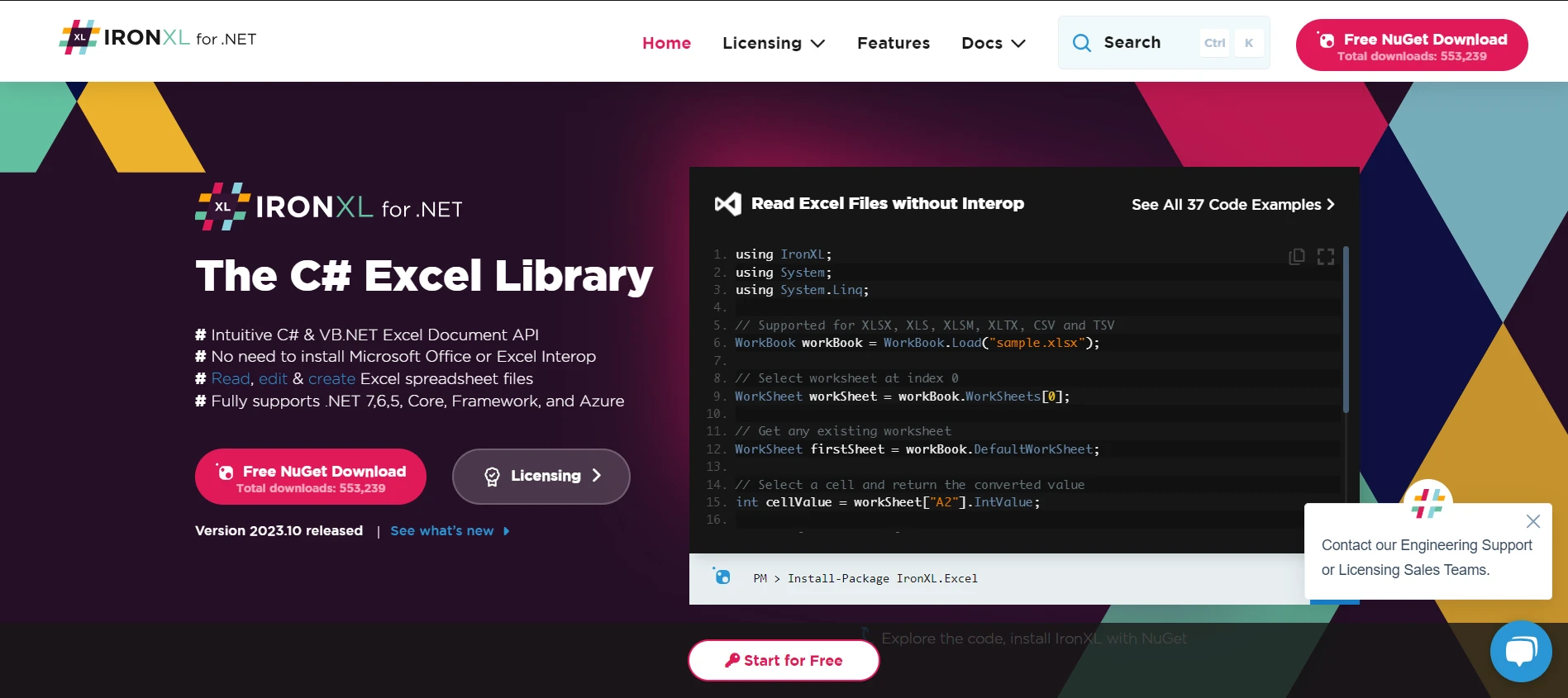
When it comes to working with Excel spreadsheets, Explore IronXL Features is a champion. In a business setting, spreadsheets play a vital role. Incorporating SignalR alongside IronXL means that financial teams could work on budget sheets in real-time, witnessing changes as they happen. Imagine a scenario where data entries from various departments flow into a centralized Excel sheet, with real-time updates for all stakeholders. The fusion of real-time communication and dynamic spreadsheet management becomes a reality with this combination.
IronOCR
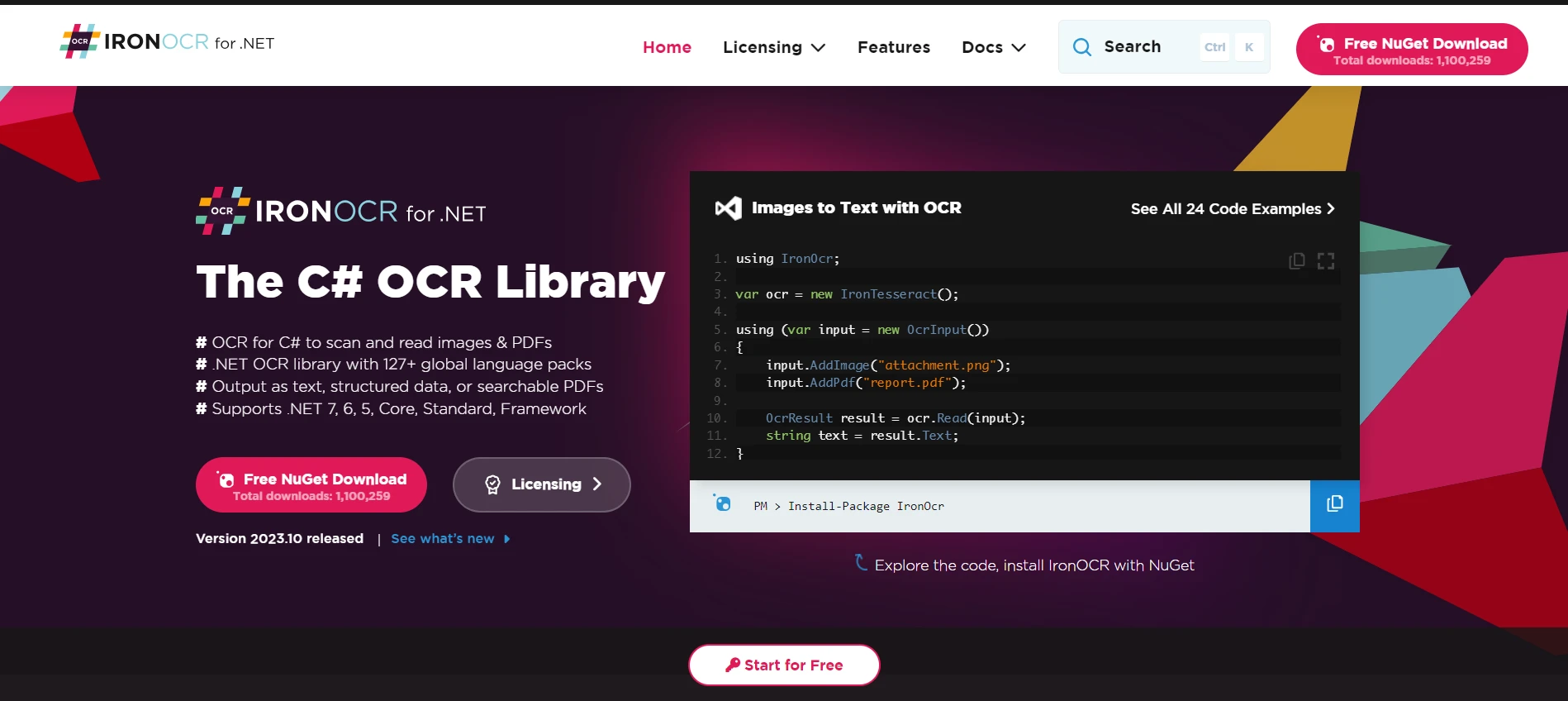
Optical Character Recognition (OCR) has become a staple in modern applications. See IronOCR in action empowers .NET developers to extract text from images and documents. Pairing this with SignalR's real-time functionality can be game-changing. Consider a platform where users upload images containing textual data. SignalR could be used to notify users in real-time once IronOCR processes the images, making data extraction interactive and instantaneous.
IronBarcode
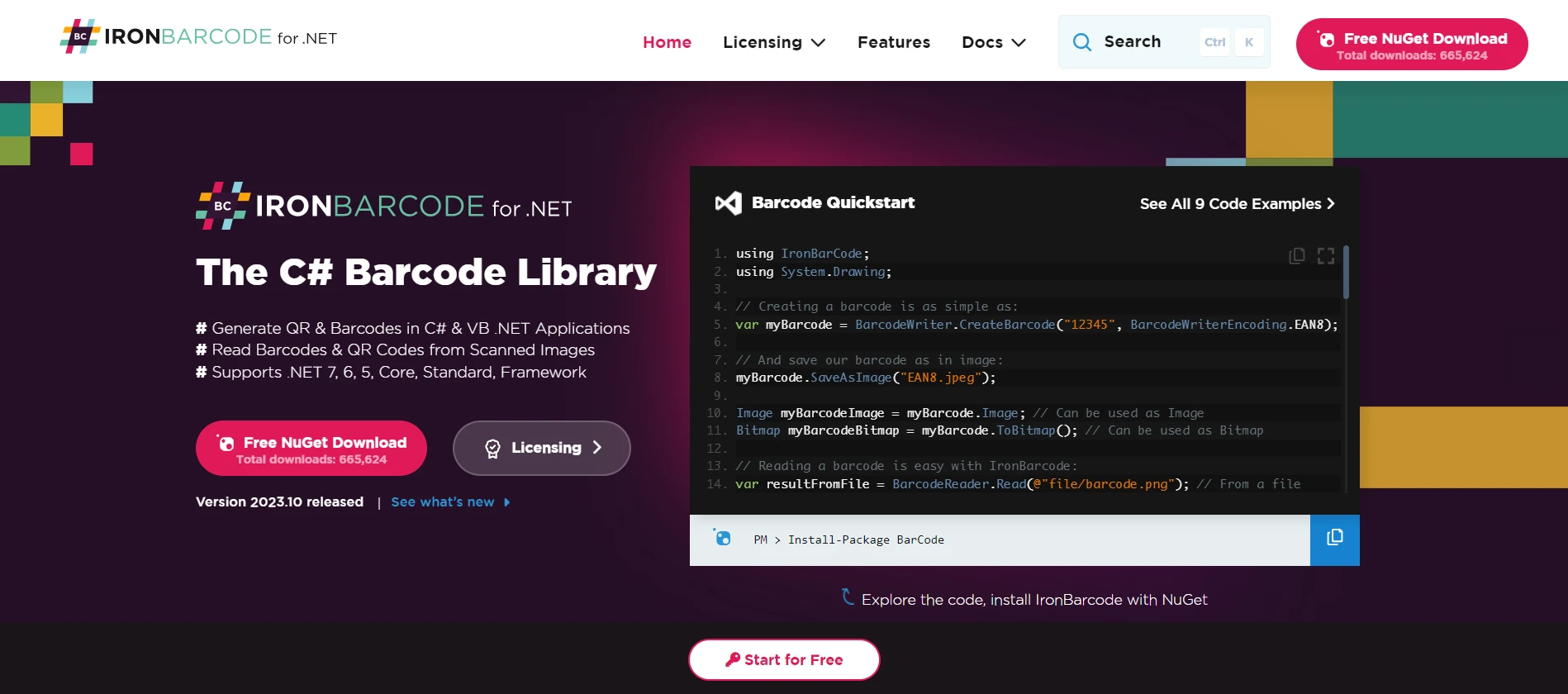
Barcoding is integral in inventory management, ticketing systems, and more. Discover IronBarcode Capabilities simplifies the creation and reading of barcodes. Now, think of integrating this with SignalR in a warehouse management system. As items are scanned, the inventory gets updated in real-time, notifying connected clients of stock levels, and ensuring a smooth logistical operation.
Conclusion
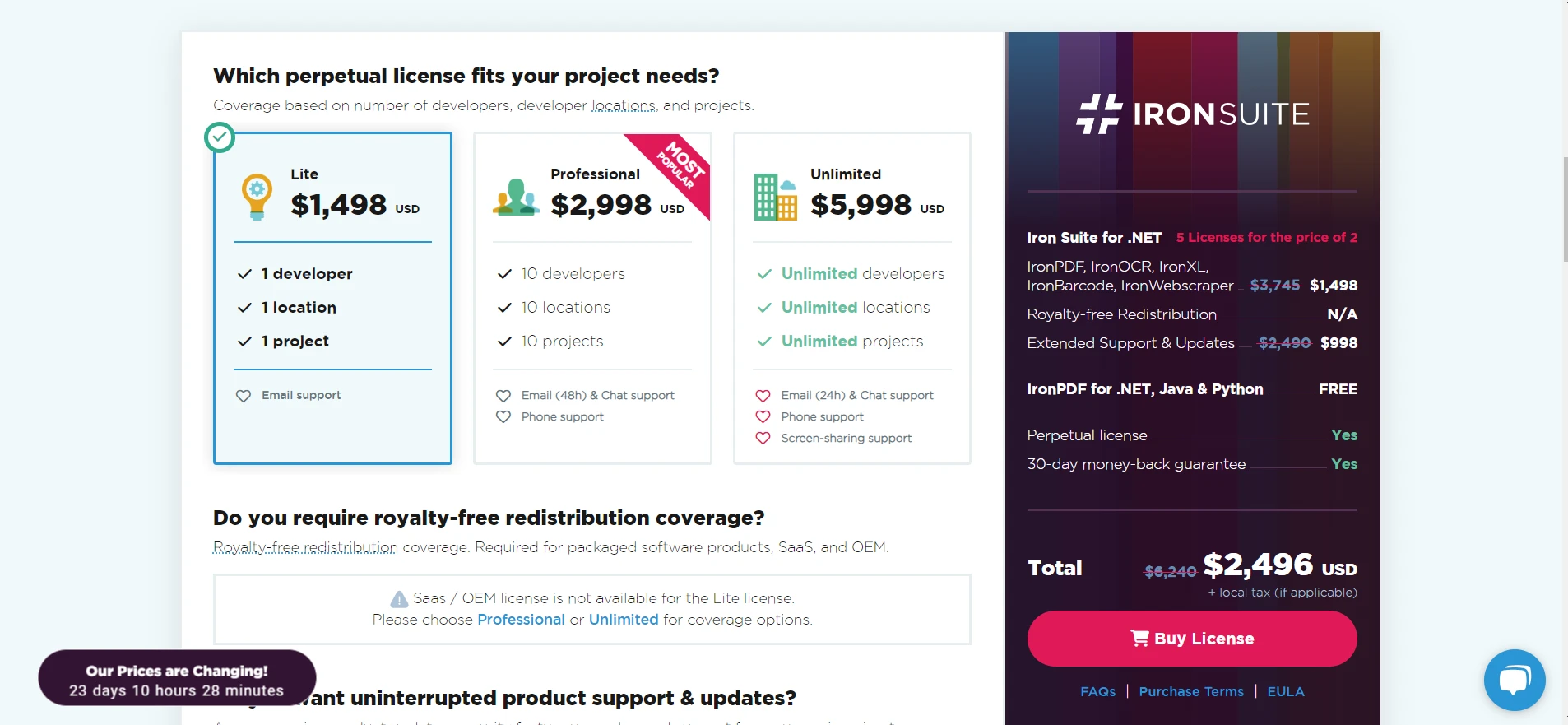
The fusion of ASP.NET Core SignalR with Iron Suite's powerful tools promises an elevated experience for both developers and end-users. Real-time web functionality becomes not just about communication but a transformative tool that, when paired with the right resources like Iron Suite, can redefine interactive applications.
It's worth noting the value proposition offered by Iron Suite. Each product license starts from $799, providing developers with a premium set of features. However, if you're unsure about the immediate commitment, each product generously offers a free trial of Iron Software Products. This allows you to test-drive the capabilities before making a decision.
And, if you're considering integrating multiple tools, there's fantastic news: you can purchase the entire Iron Suite for added value for the price of just two products! This not only ensures you get the best bang for your buck but also equips you with a comprehensive toolkit to revolutionize your ASP.NET Core SignalR applications.
Frequently Asked Questions
What is SignalR and how does it enhance web applications?
SignalR is a library in ASP.NET Core that adds real-time web functionality to applications, enabling instant server-client communication. This results in interactive and responsive web applications by allowing real-time updates and feedback.
How can I set up SignalR in my C# application?
To set up SignalR in a C# application, you need to install the ASP.NET Core SDK and use Visual Studio for development. Add SignalR services in the Startup class and map hubs to endpoints to establish server-client communication.
What is the role of a SignalR Hub in real-time communication?
A SignalR Hub acts as a central component that facilitates communication between the server and connected clients. It enables sending and receiving messages in real-time, making it a key part of SignalR's functionality.
How can I handle real-time messaging in SignalR?
Real-time messaging in SignalR can be managed by creating a server-side hub and a client-side script. The client-side JavaScript establishes a connection to the hub and handles sending and receiving messages with methods like connection.on and connection.send.
What are some advanced features of SignalR?
SignalR offers advanced features like grouping connections to segment communication, handling client disconnections gracefully, and supporting binary protocols for enhanced real-time communication capabilities.
How does Azure SignalR Service help in scaling applications?
Azure SignalR Service allows applications to scale by supporting a large number of simultaneous connections. It involves installing the Azure SignalR SDK and configuring the Startup class to leverage Azure's infrastructure for scalable real-time communication.
How can IronPDF be used to generate PDFs in a SignalR application?
IronPDF can be used in a SignalR application to generate PDF documents by converting HTML content. The RenderHtmlAsPdf method of IronPDF allows for seamless PDF generation, which can be integrated with real-time updates in SignalR.
What benefits does IronXL bring to SignalR applications?
IronXL enhances SignalR applications by enabling Excel file manipulation. It allows you to create, read, and modify Excel documents within your application, providing additional data processing capabilities alongside real-time functionalities.
Can IronOCR be integrated into SignalR applications for text recognition?
Yes, IronOCR can be integrated into SignalR applications to perform Optical Character Recognition (OCR). This allows for real-time text extraction from images, enhancing applications with dynamic text recognition capabilities.
What is the potential of using IronBarcode in SignalR applications?
IronBarcode can be used in SignalR applications to generate and read barcodes in real-time. This functionality is beneficial for applications that require dynamic barcode processing and real-time data handling.


